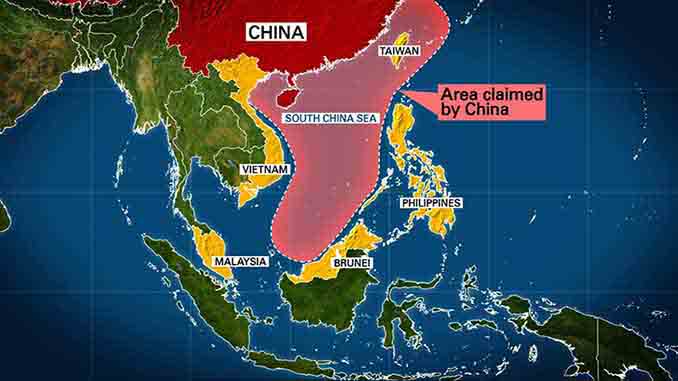East Asia is going to be the locus of great power rivalry in the 21st century as the United States is shifting its military assets from the Atlantic and elsewhere in the world to the doorstep of China. The US has many treaty allies in the region including Japan, South Korea and Australia.Washington’s recent diplomatic maneuvers indicate that it is busy strengthening existing alliance network; along with developing new alliances with India, Vietnam and some other South East Asian countries. America’s rebalancing, as well as the creation of a web of alliance system, will contribute to a complex security dilemma and arms race with China. Strategic thinkers in Beijing are apprehensive of the fact that the US is hell-bent on containing the rise of China. The Chinese also believe that the United States wants to remain the sole hegemonic power in China’s backyard. China’s stellar economic growth of the past three decades has enhanced its military, political and diplomatic capabilities. To deter and dislodge the United States from the Asian Pacific, China is translating some of its economic might into military might. Tensions and anxiety regarding the rude geopolitics of South China Sea have largely occupied the mind of the international community.
China has claimed and constructed some islands in the Spratlys and paracels, ignoring the verdict of the International Tribunal on the Law of the Seas (ITLOS); contributing to a more volatile and unstable situation. China’s construction and militarization of the islands in the South China Sea would solidify the Anti-access/Area denial strategy. They are well aware that the next attackers will likely come from the sea.
In China, from 1842 to 1949 is considered the century of humiliation; when it was forced to sign many unequal treaties with the world powers. Nationalistic sentiments and painful memories of that time are still fresh and alive in the psyche of the Chinese. They must have learned from the history; when they were weak, they were defenseless and were vulnerable to exploitation and coercion. From that perspective, it is safe to assume that they would not make the same mistake twice. They will try to be as powerful as possible so that nobody dares to challenge or to take advantage of them. China’s large submarine fleet, surface ships, anti-ship ballistic and cruise missiles, air as well as missile defense systems have created an A2/AD bubble which is difficult to penetrate even for the mighty United States. Beijing is pressing Washington hard to push it out of the first island chain. It is just the beginning of the harsh geopolitics of South China Sea.
A continued impressive economic growth would put China in much more favourable position to challenge the US and allies in the the South China Sea and beyond; because China ‘s GDP will be considerably higher than that of the United States within next ten to twenty years down the road, besides in demographic terms China is already four times as greater as its rival. Hence, China would be even a stronger adversary compared to the Soviet Union. Soviet Union had a smaller, incompetent and stagnant economy which made it a weaker strategic competitor, as military power is largely a function of the GDP.
It is also believed that geopolitical competition between the two powers would be less stable than NATO-Warsaw conflicts. During Cold War, it was believed in both in Washington and Moscow that a general war would quickly escalate to the level of nuclear threshold, this very threat of nuclear war prevented military confrontation; leading to a strategic stalemate and equilibrium.


